SUMMARY
This is AI generated summarization, which may have errors. For context, always refer to the full article.
![[OPINION] Could Marawi rebuild as a center for commerce?](https://www.rappler.com/tachyon/2023/05/marawi-rehabilitation-may-25-2023.jpg)
“Much progress has transpired in Marawi…which [is] now being enjoyed by local citizens,” said a representative of Task Force Bangon Marawi (TFBM) earlier this month. TFBM, the Philippine government interagency tasked with the city’s rehabilitation, met in person for the first time in a year and vowed to expedite the completion of the rebuilding process that has been long overdue.
In fact, this month marks six years since the start of the armed confrontation in Marawi City, a bustling economic center of Muslim Mindanao. In 2017 the Islamic State (IS) took hold of the city. The Armed Forces of the Philippines (AFP) fought the militants for five months and left the city in ruins. We visited the city in March 2023 to see for ourselves the state of rebuilding and talk to local businesses and entrepreneurs about how business has resumed since the rehabilitation.
We were interested in Marawi’s businesses because the resumption of commercial activity in a post-conflict context indicates the recovery of the local economy. Businesses provide locals with sources of income, which contributes to the stability and socio-economic progress of the people. Also, economic recovery has positive psychological effects. We believe these are integral to Marawi’s rehabilitation. We were also keen to explore how Marawi’s entrepreneurs perceive the government’s programs for promoting businesses in the area. The government’s reports about Marawi’s rehabilitation have been focused on infrastructure achievements. Seeing the state of local business provides insights into aspects of the city’s rehabilitation that tend to be overlooked.
Marawi, a thriving business center
The Maranao, natives of nearby Lanao Lake, have been known for their entrepreneurial character. Marawi has been known as the commercial and cultural center of the Maranao. The city also has a commanding view of the lake, where its former central business district was. The same area is now known as the MAA or most-affected area, the main stage of the Marawi Siege, which was effectively reduced to rubble after the fighting.
While much of the MAA’s residential sites remain abandoned and dilapidated relics of the siege, the former site of the Padian, an important economic and cultural center that served as a trading hub, has been transformed into a Peace Memorial Park. Indeed, the contrast between rundown houses and the park’s shiny structures felt off-putting. What made it worse was the lack of people in the area. Aside from soldiers patrolling the area, our team was left alone during our visit.
Interestingly, most of the entrepreneurs we talked to have fond memories of the Padian and the thriving businesses of Marawi. Our guide shared that rows and rows of stalls and shops used to line what once were narrow streets that are now the site of the park and its numerous structures. He even pointed at the new building called the School of Living Traditions.
“But where are the living?” he asked.
Activity in Marawi’s periphery
We found them in the least affected areas or LAA. While Ramadan was in full swing when we visited, we felt the vibrance of these areas. We even ran into a bit of traffic as big SUVs competed with motorbikes and tricycles on the narrow roads. We were told that these areas in Marawi City’s periphery used to be empty, but economic activity moves where the people are.
In the LAA, residents were already able to return and rebuild. With them rose coffee shops and hotels, signaling some semblance of normalcy. We were amazed to visit the biggest Bo’s Coffee in the Philippines in Marawi, which opened earlier this year. The coffee shop is housed in a 1,000-square-meter structure decorated with Maranao symbols and designs, from the legendary Sarimanok to the traditional ancestral house called Torogan. The café seats 250 and offers a 360-degree panoramic view of Marawi City.
Marawi’s hopeful entrepreneurs
It was somewhat surreal that a day before having coffee in Bo’s, we were just talking to Salika Samad, founder of the social enterprise Maranao Collectibles. She graciously welcomed us to her home and shop in Barangay Amito-Marantao. Together with her husband, she founded their enterprise while at an evacuation center in Iligan. They had no other source of income, so they capitalized on their knowledge of the traditional Maranao art of weaving langkit, something Salika learned from her mother. Together with other internally displaced persons, their operations slowly grew.
Salika saw Maranao Collectibles as an opportunity for her family and other IDPs to generate income during a difficult time when IDPs like them could only depend on aid in the evacuation centers. She also felt that their focus on traditional textiles helped ensure that this heirloom weaving tradition continued to the present day. “After the siege, people looked at us [Maranaos] as if we were all terrorists. We are artists…and we want to introduce ourselves as a people that produces beautiful things,” Salika explained.
The Maranao IDPs endured not only dismal living conditions in evacuation centers but also discrimination, especially for most IDPs that were home-based evacuees staying in community-managed evacuation camps. Years on, these experiences left an indelible mark on the people, especially for the IDPs who are still living in deplorable conditions, lacking even the most basic of necessities such as water supply. The entrepreneurs we talked to highlight their businesses as a way to regain and assert their identity and dignity.
Jal Mustari of Aretes Style shared the same sentiments. We visited his cozy apparel shop in Marawi City, where he showcases products that incorporate the langkit in modern fashion applications. He works directly with traditional weavers and dressmakers from two communities: one from the Lanao del Sur municipality of Tugaya and the other, an IDP community from the relocation site in Sagonsongan, Marawi City, making sure their products and labor are paid a fair, competitive price. He emphasized how enterprises like Aretes Style contribute to a ripple effect in the community: “When you support a social enterprise like Aretes Style, you support not only the weavers, but you also support the local fabric and textile sellers…you support the tricycle driver we hire to transport the materials we use. A lot of people benefit.”
The COVID-19 pandemic was a big hurdle for Aretes Style, shared Jal. “We were almost non-operational…it was through the support of a crowdfunding effort that kept us afloat,” he said. He also admitted that he was unaware of government support for social enterprises like his. Instead, he chose to tap crowdfunding as a firm believer of katitinabanga, a Maranao practice of helping one another. Aretes Style’s products also incorporate Maranao culture by using Maranao words as the names of their products.
Like Aretes Style, another social enterprise we talked to that puts Maranao culture front and center is N’ditarun Tano. Established by a team of teenagers, N’ditarun Tano, Maranao for “this is ours,” aims to promote and preserve Maranao culture by using pananaroon or traditional proverbs in statement shirts. They also incorporate traditional designs such as the okir motif and the langkit. Ammar Cayongcat of N’ditarun Tano shared that their team sees their social enterprise as a “business with social obligations” since they conceptualized their enterprise in response to the difficulties brought about by the siege and the pandemic. Aside from ensuring their community partners get paid fairly, a portion of the enterprise’s income is spent on numerous community projects.
A more people-centered rehabilitation effort
The businesses we talked to see their effort to help the community as a reaction to its needs. This speaks of the gaps the government-led rehabilitation has left since it seemed more focused on infrastructure projects. Maranao Collectibles, Aretes Style, and N’ditarun Tano work with the people in the communities, providing opportunities to earn and creating ripples in the local economy. This is not to say that the government has no livelihood projects for Marawi. The IDPs we talked to mentioned receiving some livelihood assistance of P72,000 from the government in 2019. Money is welcome, but not enough; when there is not enough to get by, money runs out quickly.
This is why the businesses we talked to emphasize that livelihood assistance must be capital and skills. Livelihood programs must also consider that not everyone wants to start their own business and vary the assistance they provide the people.
“The rehabilitation…is not people-centered,” says one of the business owners we talked to. Our visit to Marawi made us realize that the task of rehabilitation must go beyond physical structures. Building shiny new buildings, gigantic sports stadiums, and beautiful parks is easy. But without the people these structures are supposed to serve, rehabilitation remains incomplete. A more people-centered rehabilitation program considers rebuilding the dignity and capability of the people as its paramount task. Ignoring them leave few options for people in dire conditions, and they may be cornered to opt for extreme ideas.
As businesses create a ripple effect in the community, capitalizing on the Maranao entrepreneurial identity could be a significant turning point in the effort to bring Marawi’s commercial past back to life. Marawi identity as Muslim Mindanao’s economic and cultural center does not have to be left in the past; it could still be Marawi’s present and future. – Rappler.com
John Lee Candelaria, PhD is assistant professor of the International Peace and Coexistence Program of Hiroshima University, Japan.
Mari Katayanagi, PhD is professor of the International Peace and Coexistence Program of Hiroshima University, Japan.
Add a comment
How does this make you feel?


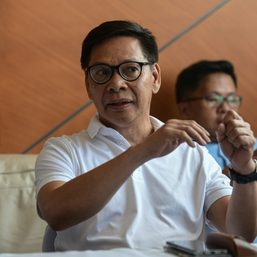
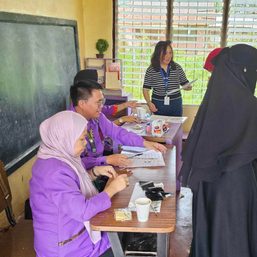
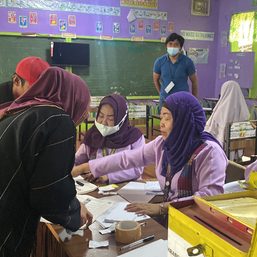

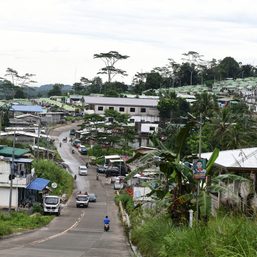
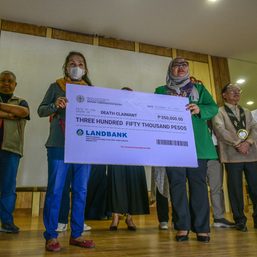
There are no comments yet. Add your comment to start the conversation.